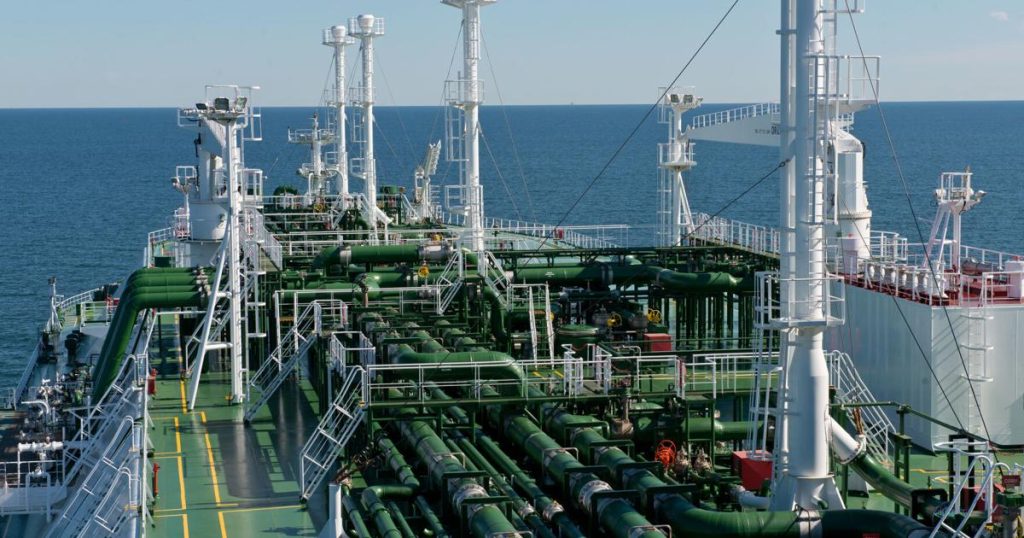(The Center Square) – Under the Trump administration, the Department of Energy has so far issued five liquified natural gas (LNG) authorizations in the Gulf of America states of Louisiana, Texas and Florida.
Under the first Trump administration, the U.S. became the largest LNG exporter in the world, led by the Gulf states of Louisiana and Texas. By 2023, Louisiana accounted for 61% of LNG exports, according to U.S. Energy Information Agency data.
The new authorizations reverse Biden administration orders, including banning issuing new LNG export permits, which disproportionately negatively impacted Gulf states.
“Exporting American LNG strengthens the U.S. economy and supports American jobs while bolstering energy security around the world, and I am proud to be working with President Trump to get American energy exports back on track,” Energy Secretary Chris Wright said.
The DOE’s first LNG export authorization was the Commonwealth LNG project in Cameron Parish, Louisiana. Owned by Kimmeridge Texas Gas, LLC, its exports to non-free trade agreement countries are expected to top 1.2 billion cubic feet per day (Bcf/d) of LNG.
The DOE said Commonwealth LNG exports “are likely to yield economic benefits to the United States, diversify global LNG supplies, and improve energy security for U.S. allies and trading partners over the course of the export term through 2050.” A final authorization is expected later this year.
The DOE’s second authorization was issuing an “Order on Rehearing,” reversing a Biden administration order that created greater regulatory burdens for using LNG as a marine fuel source, known as LNG bunkering.
The reversal will benefit JAX LNG, a small-scale coastal LNG facility located at Dames Point near Jacksonville, Florida, impacted by the Biden-era directive. It dispenses LNG fuel to ships, including cruise ships, car carriers, petroleum tankers and container ships.
The DOE withdrew exercise of its jurisdiction under the Natural Gas Act for ship-to-ship transfers of LNG for marine fuel use at a U.S. port, in U.S. waters, or in international waters, it said. It also left unchanged its authorization to JAX to export LNG via ISO container.
The demand for LNG as marine fuel has increased as emissions regulations for shipping have increased. The number of LNG-fueled ships is expected to nearly double, reaching more than 1,200 vessels by 2028, according to an EIA January 2025 Quarterly Gas Report.
The DOE’s third LNG authorization extends an LNG export permit for Golden Pass LNG Terminal LLC, currently under construction in Sabine Pass, Texas. The project was first approved under the first Trump administration.
Golden Pass, owned by QatarEnergy and ExxonMobil, is expected to begin exports this year. Once operational, it will be the ninth large-scale export terminal operating in the U.S., able to export up to 2.57 Bcf/d of LNG.
The DOE’s fourth authorization extended an LNG export permit for Delfin LNG LLC to construct a floating liquefied natural gas vessel off the coast of Louisiana after it was delayed by the Biden administration.
Delfin, majority-owned by Fairwood Peninsula, Talisman Global Alternative Master, L.P. and Talisman Global Capital Master, L.P., is expected to reach a final investment decision later this year. The order extends the authorization date to June 1, 2029, for Delfin to begin exporting up to 1.8 Bcf/d of LNG to non-free trade agreement countries.
The fifth and most recent authorization was for Port Arthur LNG Phase II in Jefferson County, Texas. Owned by Sempra Energy, it’s projected to export 1.91 billion Bcf/d of LNG once completed. Port Arthur Phase I is currently under construction and expected to begin exporting LNG in 2027.
Sempra also operates the Cameron LNG export terminal in Louisiana, which has been exporting LNG since 2019. It’s currently constructing the Energia Costa Azul terminal in Mexico, which is slated to begin commercial export operations of U.S.-sourced LNG next year.
All five authorizations bring the total volume of LNG exports to 11.45 Bcf/d, the DOE said.
According to EIA’s most recent Short-Term Energy Outlook, LNG exports are expected to reach record highs this year, averaging more than 15 Bcf/d, coinciding with record projected natural gas production of nearly 105 Bcf/d, led by Texas and Louisiana.


